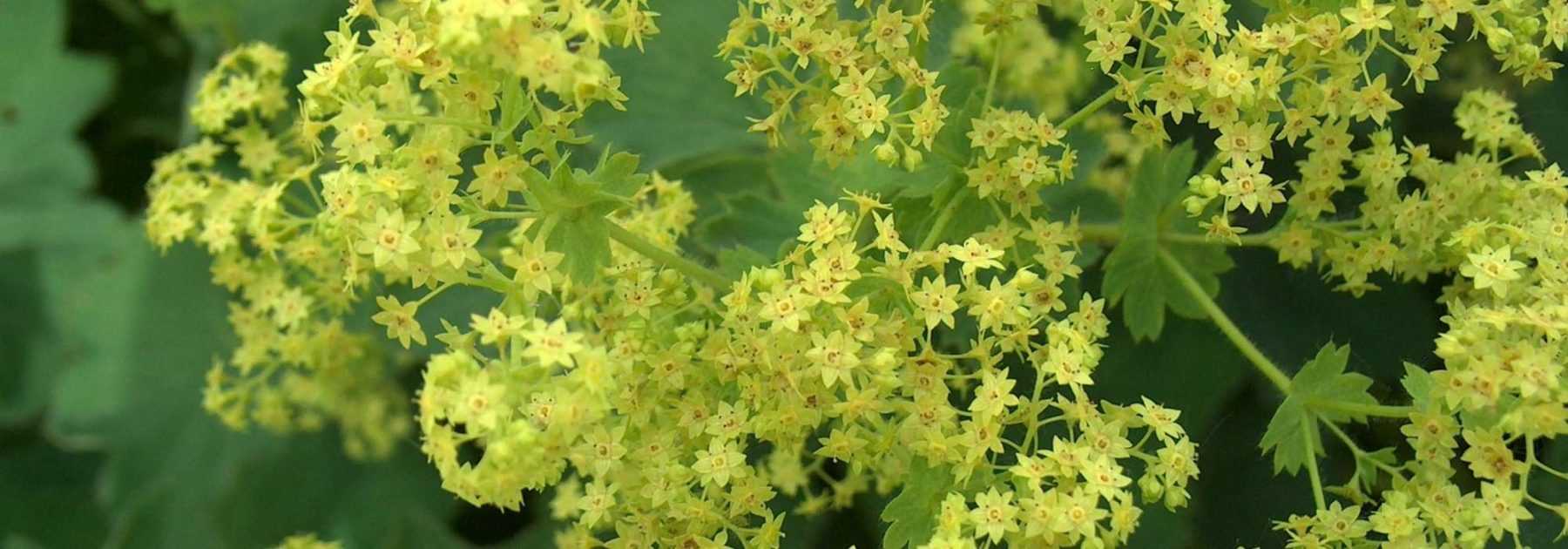
Lady's Mantle: Planting, Growing and Care
Contents
Ladies' mantles in a few words
- Lady’s mantle is a charming perennial that offers chartreuse green flowering clouds in late spring
- Its remarkable foliage gracefully catches morning dew drops
- This is a hardy young plant, undemanding, requiring little care
- Its chic and trendy green-yellow flowering brightens up flower beds
- There are small-sized varieties, perfect for rock gardens
Our expert's word
Lady’s Mantle is one of those reliable perennials, indispensable in the garden. This versatile bush is perfect for dressing the base of rose bushes, creating a lovely ground cover, or edging a flower bed. In borders, it acts as an enhancer that magnifies and highlights the beauty of its companions, elevating them without overshadowing them.
Its flowering consists of a multitude of small flowers, forming a chartreuse-green froth above poetically beautiful foliage. How can one resist the charm of its rounded leaves that unfold like origami, gracefully catching dewdrops?
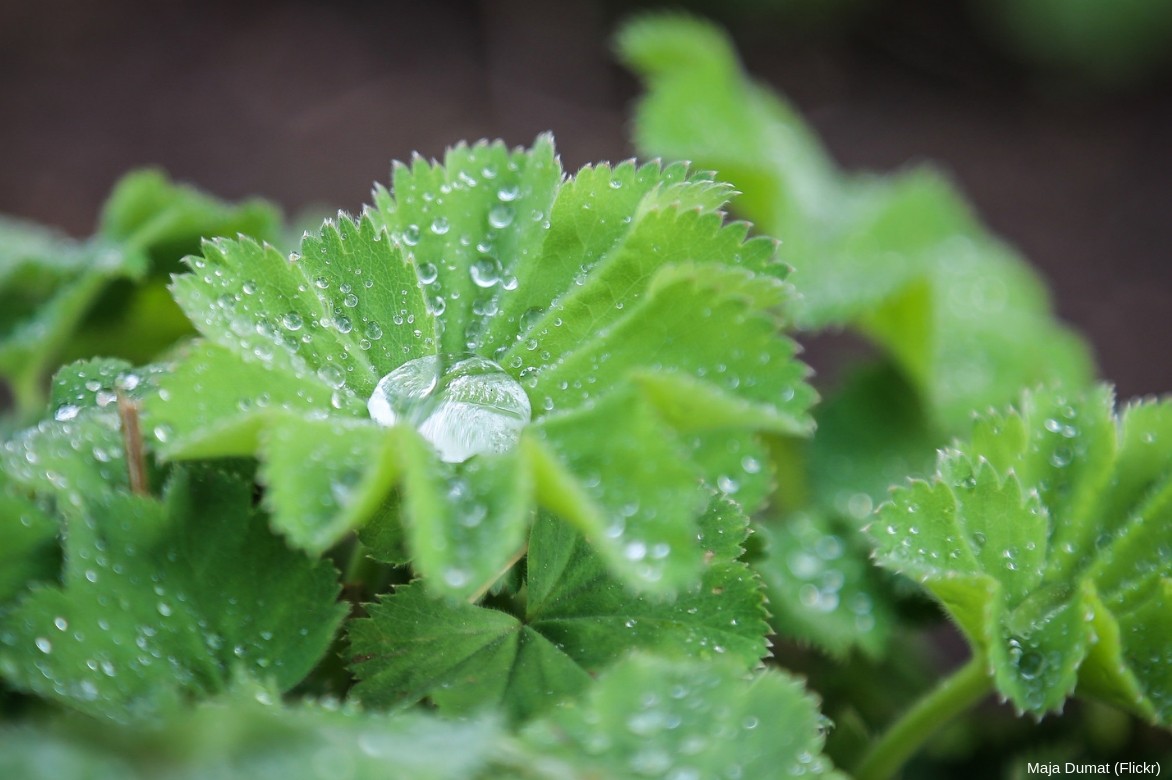
Lady’s Mantle and dewdrops
Lady’s Mantle is a graceful perennial with a delicate appearance—yet it is sturdy and hardy! Robust and easy to grow (even for beginner gardeners), it also grows quickly to form a generous cushion.
Lady’s Mantle is inseparable from English and classic gardens. Its exquisite, modest beauty blends elegantly with bushes, grasses, and other perennials. Yet, its graphic foliage and trendy acid-yellow flowering fit just as well in a modern or urban garden.
Botany
Botanical data
- Latin name Alchemilla
- Family Rosaceae
- Common name lady's mantle
- Flowering from May to October, depending on the variety
- Height 0.15 to 0.45 m
- Sun exposure partial shade, non-scorching sun
- Soil type moist but well-drained, adaptable to all soils
- Hardiness -15°C
Lady’s mantle is a genus of herbaceous perennial belonging to the vast Rosaceae family (like strawberries, dog roses or mountain ash!). Rosaceae are mainly found in temperate regions of the Northern Hemisphere. Among the most important genera, the Alchemilla genus comprises 250 species.
These are mainly ground-cover plants forming spreading, rounded clumps with small, petal-less flowers in greenish-yellow (known as chartreuse green).
The leaves of lady’s mantle are rounded in shape, palmatilobate (lobed like a hand). They fan out and consist of 3 to 5 lobes with plicate and dentate edges, of subtle and delicate beauty. They are most often covered with hairs that make the leaf water-repellent, forming charming beads of rainwater or dew. This mysterious characteristic intrigued alchemists who saw it as magical water, ideal for making the philosopher’s stone. They called it “celestial water”. This is actually where its name comes from.
The yellowish-green flowers, quite small, in corymb-like cymes are borne on thin stems above the foliage and give the plant a very decorative, airy appearance. They are interesting in bouquets of fresh or dried flowers and the leaves and flowers are used in floral art.
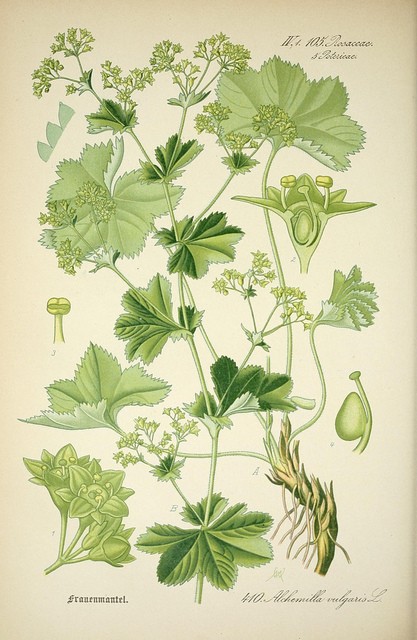
Alchemilla vulgaris – botanical illustration
Lady’s mantle also has medicinal properties that were widely used in the Middle Ages. It is renowned for its astringent, soothing and healing properties. Often referred to as a “woman’s herb”, it treats gynaecological disorders. It can also be used to flavour dairy products, herbal teas and tea, and livestock also seem to appreciate it.
Alchemilla also intrigues botanists because they can reproduce by apomixis, meaning they are capable of producing seeds without fertilisation of the flower! The seeds thus produce young plants identical to the mother plant. Ultimately, the result is the same as propagation by cuttings. This is very useful for gardeners who wish to maintain identical plants.
In the garden, lady’s mantle is a plant for heavy, clay soils that has the good grace to be adaptable to all soils. It is also very easy to maintain and spreads quickly, which is rewarding for beginner or time-pressed gardeners.
Its uses are multiple: medium to small in size, it can slip between other perennials, among spring bulbs, form ground covers and edge a path or even adorn a border. The smallest varieties (such as Alchemilla alpina or Alchemilla epsisila) can also advantageously fill shady rock gardens.
The discreet beauty of lady’s mantle makes them good basics for the garden. They fit just as well in a natural garden combined with foxgloves, lupins and bellflowers or a classic garden with roses. Combined with dark foliage, lady’s mantle will work wonders in a contemporary garden.
The main varieties of lady's mantle
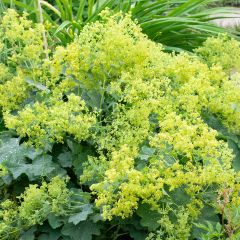
Alchemilla mollis
- Flowering time July to September
- Height at maturity 40 cm
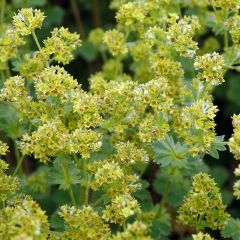
Alchemilla erythropoda
- Flowering time July to October
- Height at maturity 30 cm
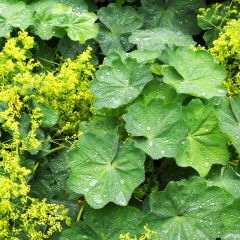
Alchemilla vulgaris
- Flowering time July to October
- Height at maturity 25 cm
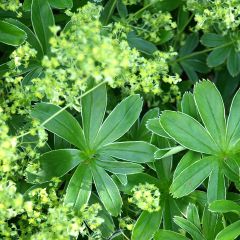
Alchemilla alpina
- Flowering time July to October
- Height at maturity 15 cm
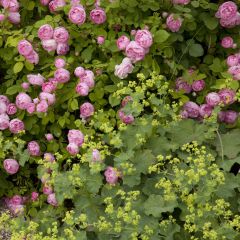
Charm Duo - Duo of Roses and Lady's Mantle
- Flowering time July to October
Discover other Alchemilla
View all →Available in 1 sizes
Available in 1 sizes
Available in 3 sizes
Available in 3 sizes
Available in 1 sizes
Available in 1 sizes
Available in 1 sizes
Available in 1 sizes
Planting lady's mantles
Where to plant
Lady’s mantles are not demanding. They adapt to all types of soil, provided it is not too dry. They prefer light partial shade; scorching sun does not suit them, as it tends to burn their leaves.
When to plant
Lady’s mantles can be planted at any time of the year, except during frost periods, as they are supplied in buckets. However, autumn (September-October) and spring (late March to May) are always preferable.
How to plant
Lady’s mantles are planted like all perennials in buckets. Here are the steps to follow:
- Hydrate the root ball by soaking the bucket in a basin of water
- Prepare the ground by working it to a depth and width 2 to 3 times the size of the root ball
- If your soil is poor, enrich it with fertiliser or well-rotted compost and/or manure
- Dig a hole and position the root ball so that the collar is level with the surface
- Firm the soil and create a watering basin around each root ball
- Water thoroughly to settle (firm) the soil
For witty advice on planting (and how not to do it), click here!
Lady’s mantles can also be planted in pots or containers. As they can become quite large, choose the more compact varieties: A. epipsila or A. erythropoda, or even the ground-covering Alpine lady’s mantle. Due to the size of perennials, containers are preferable. For a 50 cm long planter, allow for 5 to 6 young plants. Watering should be regular: keep the compost moist and add liquid fertiliser to the water every fortnight.
Maintenance
The only care lady’s mantles require is cutting back the plants after flowering. This helps renew the foliage and encourages a second flush in autumn. Additionally, it prevents them from self-seeding and becoming invasive.

After flowering, cut back the entire plant to ground level to renew the dulled foliage
Leave the foliage in autumn as it is semi-evergreen. It provides shelter for beneficial insects in winter and protects the emerging leaves.
Lady’s mantles are hardy plants that are generally free from diseases and parasitic pests.
Propagation
Lady’s mantles self-seed spontaneously. You can collect the seeds to sow them directly in place in autumn or in buckets.
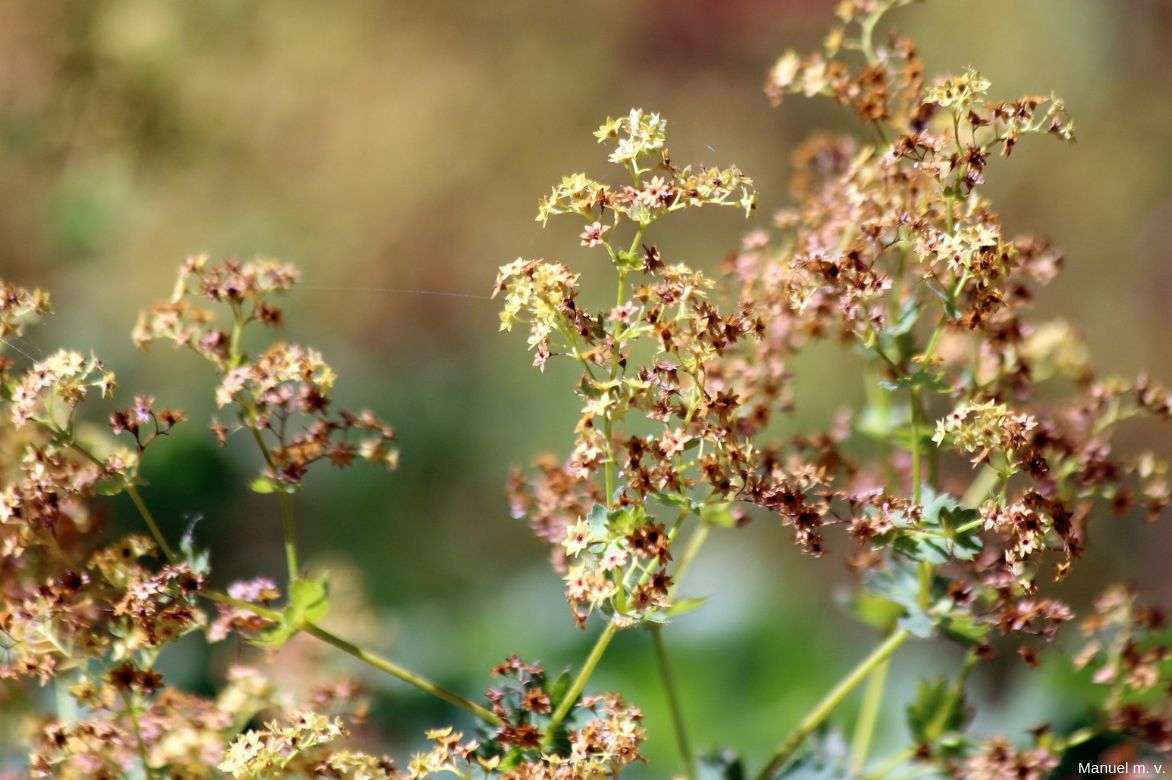
Faded flowers of lady’s mantle
The other method is to divide large, established young plants.
When and how to sow lady’s mantles
The seeds need a cold period before germinating (vernalisation). If sowing in place, choose late summer so winter triggers germination. Alternatively, place the seeds in the fridge for a few weeks before sowing.
- In situ, work the soil to a depth of 8-10 cm while incorporating potting compost or garden compost. In buckets, use special sowing compost.
- Sow and cover with a thin layer of compost
- Water with a fine spray to help the soil adhere to the seeds
For more detailed advice, see this article on sowing.
When and how to divide lady’s mantles
The ideal times are March-April in spring and September-October in autumn.
Choose strong, healthy young plants.
- Lift the plant with a garden fork
- Cut around the clump into sections about 10cm wide using a spade or knife
- Replant these divisions immediately, either in buckets or in situ
- Water generously
Pairing Lady's Mantle in the Garden
Lady’s Mantles are perfect for borders, and their beautiful foliage can form a lovely ground cover beneath bushes. Their soft, flowing habit softens the base of rigid or formal hedges. They are often used effectively to balance the vibrant colours of spring bulbs and conceal their fading.
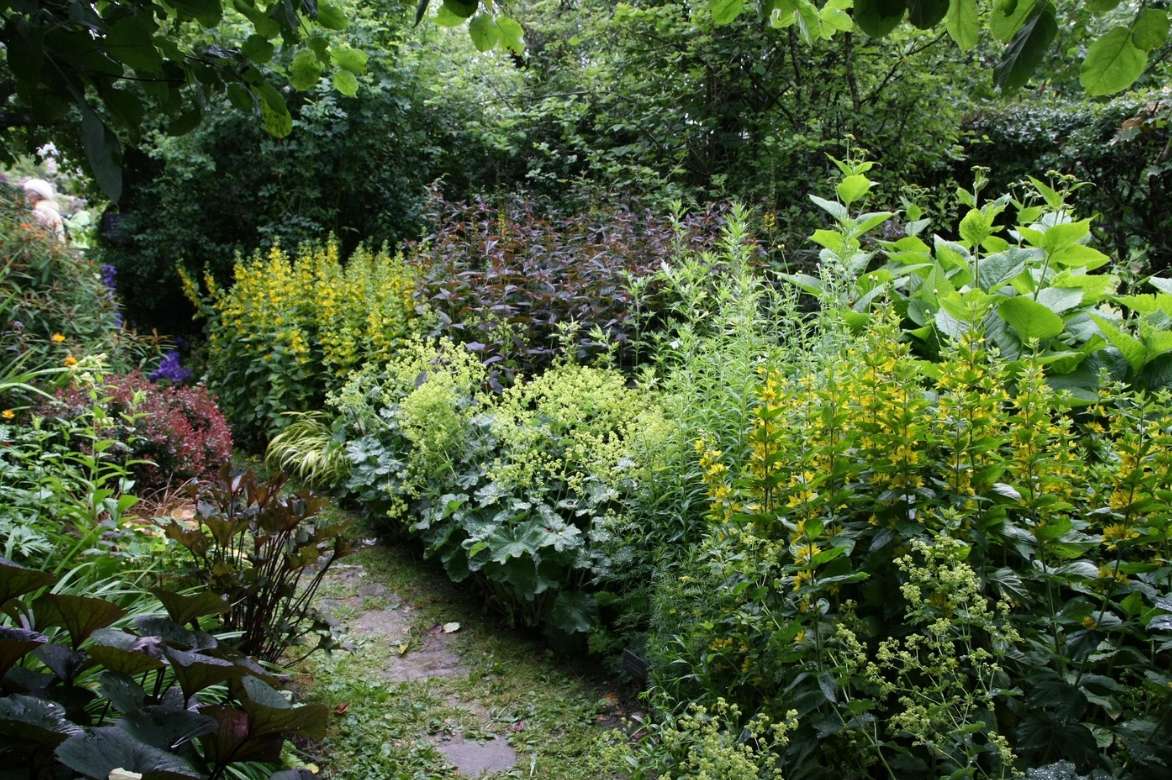

An example of a combination: Lysimachia punctata, Lysimachia ciliata ‘Fire Cracker’, Alchemilla mollis, Ligularia dentata ‘Britt Marie Crawford’, Berberis thunbergii ‘Atropurpurea Nana’, Hakonechloa macra ‘All Gold’ (Le jardin des Airelles, Francorchamps).
In an English-style border, they pair beautifully with roses, peonies, geums, alliums, campanulas, salvias… to visually link all these plants together and create a cohesive and attractive display.
Lady’s Mantles will happily contribute to the mix of perennials, bulbs, and flowering bushes in romantic gardens.
An example of a romantic-themed combination: Alchemilla Mollis, Geranium ‘Patricia’, Digitalis purpurea, Crambe cordifolia, Rose ‘Versicolor’, Catalpa bignonioides ‘Aurea’. By pairing Lady’s Mantles with purple or burgundy foliage, you’ll create a strong focal point in a contemporary and sophisticated border.
A low border in pink and green tones can be created with Alchemilla epipsila and a pink Veronica from July to September. The ground orchid will add an elegant touch in June-July. Autumn will be marked by the delightful waterlily colchicums, and the Heuchera ‘Pink Pearl’ will enliven the display year-round with its changing foliage.
→ Discover more ideas for combining Lady’s Mantles in our advice sheet.
Useful resources
- Discover our varieties of lady’s mantle.
- Watch our video guides: planting perennials in rock gardens or in flower beds
- Advice sheet: Pairing lady’s mantle
- Advice sheet: Choosing a lady’s mantle
- Discover green-flowered perennials, hidden gems of the plant world!
- Subscribe!
- Contents
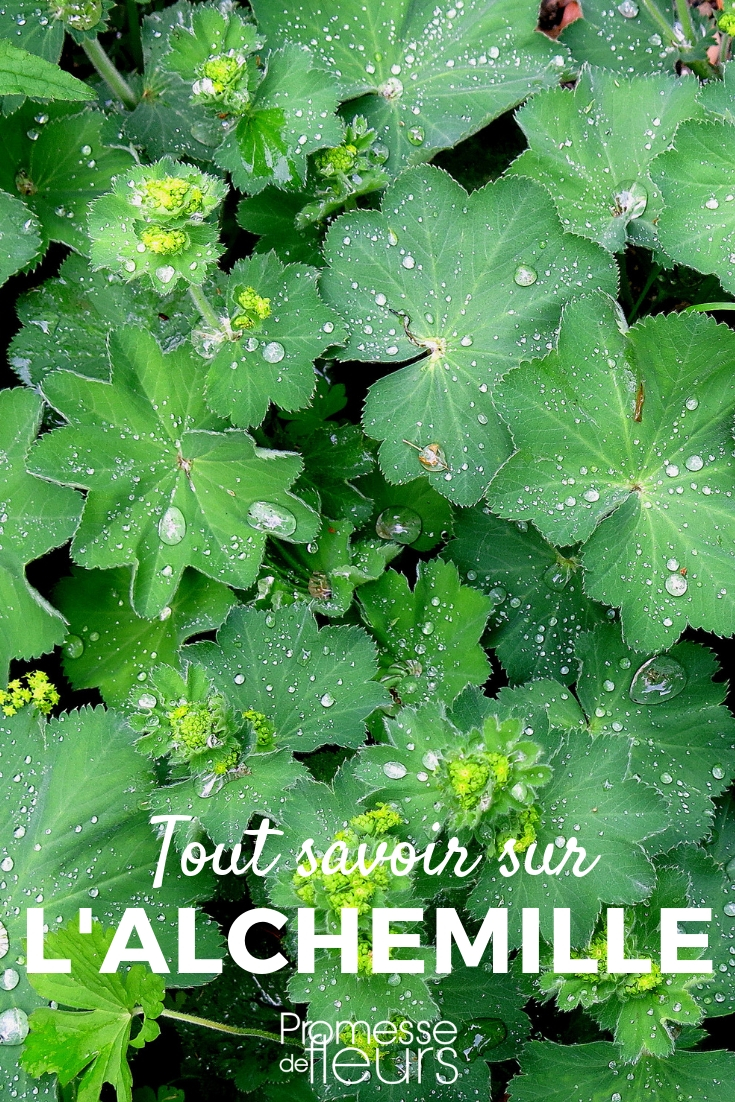






































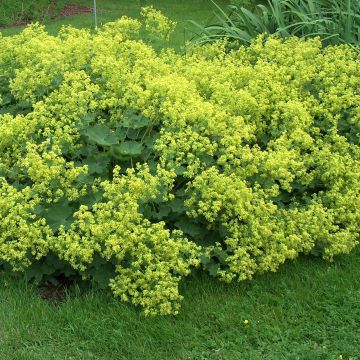

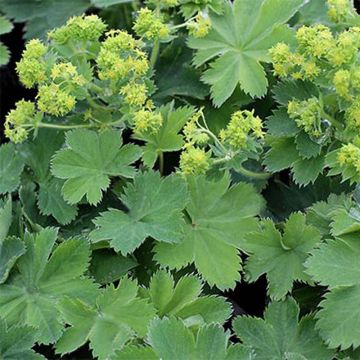


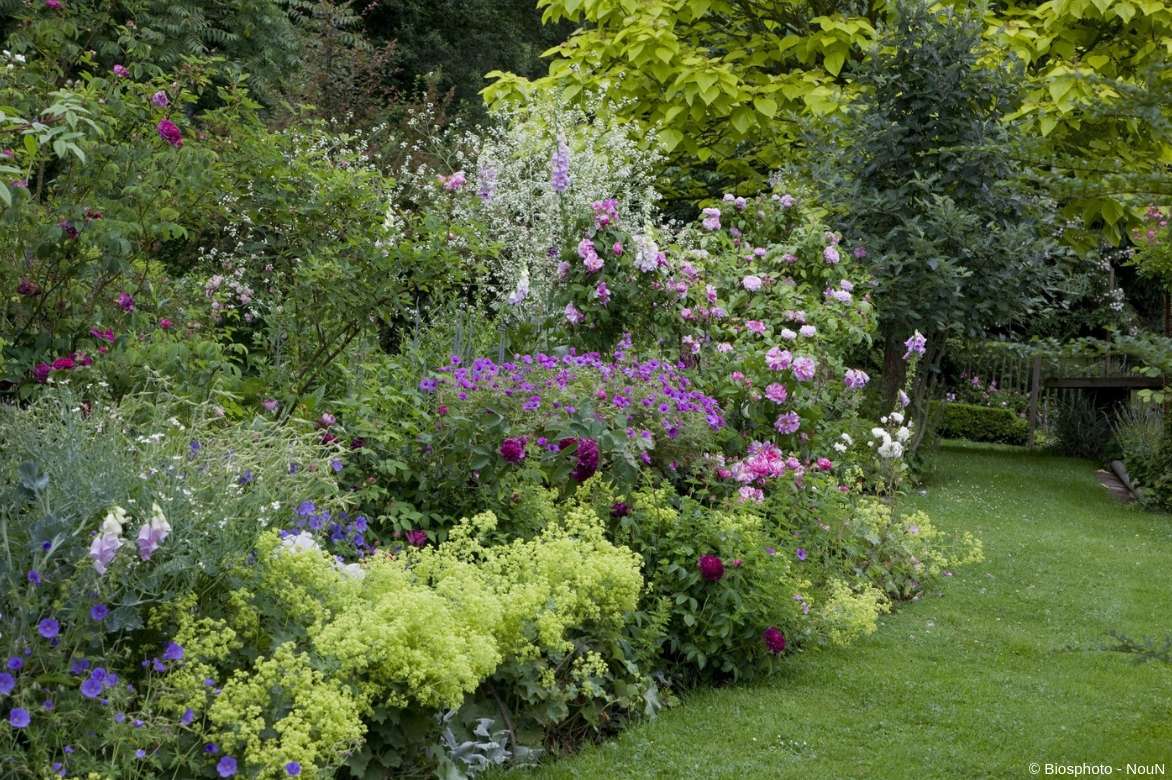
Comments